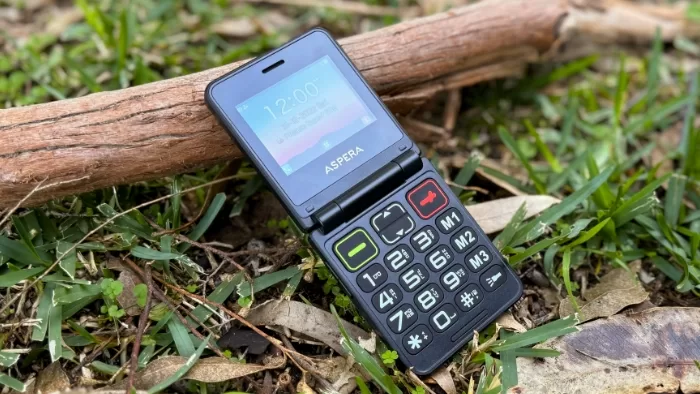
Feature phone fans on a budget will find the Aspera A50 acceptable, especially if you need to upgrade from a 3G-only handset.
| Pros | Cons |
|---|---|
| Inexpensive | Very slow for anything but phone calls |
| Charging base included | Camera is woefully bad |
| SOS button to quickly call emergency contacts | Cheap plastic construction |
Score: 4/5
 |
Buy The Aspera F50! | Buy On Amazon |
In this review
Aspera F50 Specifications
Aspera F50 Design
Aspera F50 Camera
Aspera F50 Performance
Aspera F50 Battery
Aspera F50 Conclusion
Feature phones are a distinct category within the phone space, an these days they’re a pretty small niche with relatively few choices if you just want a simpler phone life.
The Aspera F50 is a relatively low-cost feature phone option that gets the fundamental basics right enough to be worthwhile, though it’s definitely best suited for a phone user who wants nothing to do with smartphones whatsoever.
Design
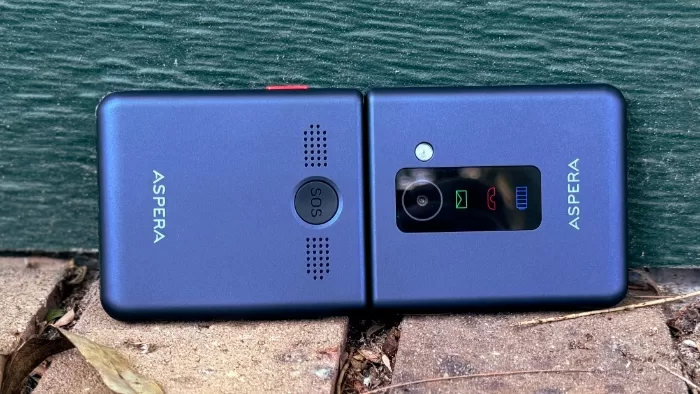
The Aspera F50 is a basic flip phone of the very old school style, available in either a red or blue finish – it’s the latter that Aspera Mobile sent me to test out.
I’ve been writing about technology long enough that I can indeed recall when the fight was between this style and “candybar” style feature phones, though of late that’s not so much a pitched battle as a very small skirmish, thanks to the small number of choices available to you.
First impressions of the Aspera F50 aren’t great, largely because while this is a $99 phone – so expecting a lot would be foolish – it does feel noticeably light and simply built.
The likely target market for the Aspera F50 probably isn’t taking it bungee jumping (you never can tell, mind), but it doesn’t feel particularly robust, which does also have some implications for longer term durability of its buttons and ports.
Flipping the Aspera F50 open reveals a simple 2.4 inch LCD display. It’s in no way touch sensitive, instead controlled by left and right buttons and a simple middle rocker control for everything the phone can do. The display is only moderately bright, which might be an issue in direct sunlight at some points.
Like many prior Aspera phones I’ve tested, one bright point here is that the battery on the Aspera F50 is entirely removable and (theoretically) replaceable.
Also read:
Aspera AS5 Review
Aspera AS8 Review
Aspera Nitro 2 Review
The back of the phone pops off to reveal the battery compartment, as well as the SIM card tray and microSD expansion tray. It does take a little work to get the back casing off, though I suspect most buyers are going to drop in the battery and SIM card and then never open it up again.
Speaking of the back of the phone – and with a target market that typically skews a little older than the average – the Aspera F50 also features an SOS button on the back of the phone. Once set up it will send an SMS to up to 5 contacts, as well as calling one primary number, though you can entirely disable it if it’s not needed.
Camera
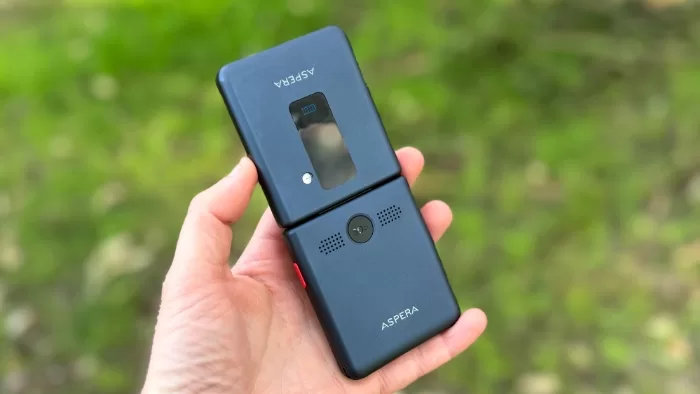
The Aspera F50 has a camera… just.
Specifically, it’s a single 2MP rear lens that by default only shoots at 640x480 resolution. Dig into the Aspera F50’s settings and you can bump that up to 1600x1200, though it’s not worth it.
The Aspera F50, simply put, does not take pleasing images, and even the interface for taking photos makes it harder than it should be. Opening the camera is a multi-tap operation with significant delays, so you'd have to want to wait a good long time before even being able to take your photo with the Aspera F50.
I was stumped for a while trying to work out why the Aspera F50 wasn’t saving any photos until I realised that the camera shutter controls were on the number pad, not the selection rocker, which unhelpfully vibrates as though it’s taking and saving an image – but it’s not.
Image quality is just downright awful, any way you paint it. While that’s effectively accurate to the way that feature phone cameras worked years back, it’s 2024… and nobody really wants photos like this.
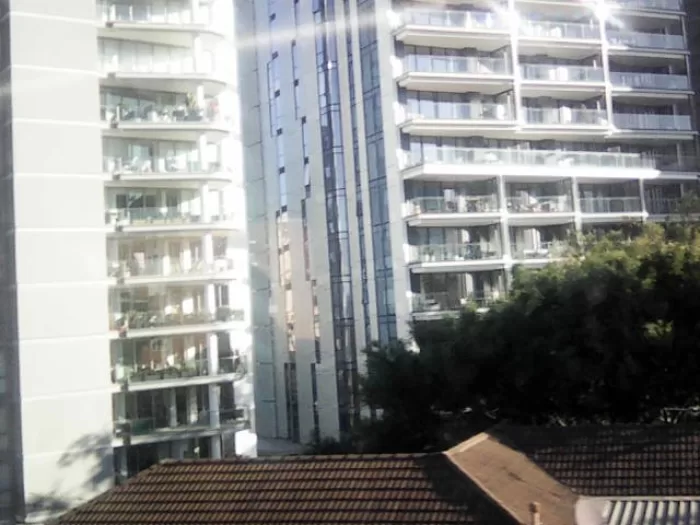
The Aspera F50's camera has an... interesting... relationship with light sources.

If anything is in motion in the frame, it likely won't end up well.

Exposure problems are a frequent occurrence.

It's even tricky to get pleasing shots of subjects that are not, in fact, moving at all.

Selfies are feasible -- if you flip the whole phone around. They're... less than optimal.
Performance
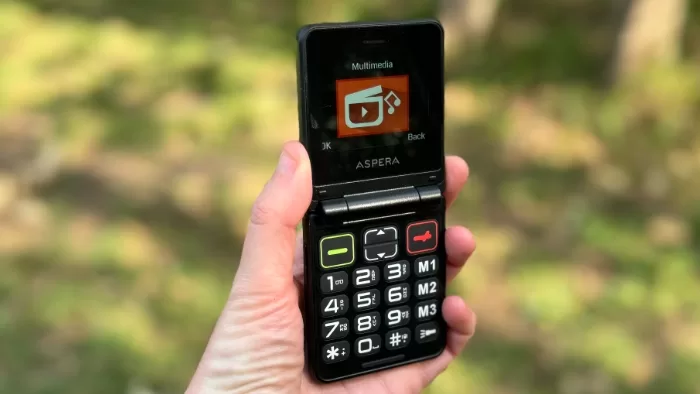
It would be ridiculous and stupid to criticise the Aspera F50 for its application performance, because that absolutely isn’t the point of a phone like this.
It’s built on a fairly slow processor – it’s not clear which processor or speed to speak of, though Aspera’s specifications do note that it’s running on just 48MB of RAM with 128MB of onboard storage. That’s MB, not GB.
While you do get a few additional functions such as a basic music player, internet browser and a single game – Sokoban – and they're all slow to start working and honestly kind of annoying to even try to do so. I will give the Aspera F50 bonus points for its torch function, simply because it has a dedicated key on the keypad for that.
Still, I’m going to hazard the guess that nearly 100% of the Aspera F50’s market couldn’t give a tinker’s cuss about any additional apps to any significant degree at all.
They want to know if it can make and take phone calls, because for a huge proportion of the feature phone market, it's a phone, first and foremost.
The short answer there is that it can, via a standard rubbery key pad. Like much of the rest of the phone’s functions, nothing is particularly fast here, but it’s functional at that level with support for 4G VoLTE the key attraction point.
Why would 4G VoLTE, a phone feature that’s been around a good long while now be exciting on this phone?
It’s because Australia’s 3G networks are being decommissioned this year, and a large number – in the hundreds of thousands, according to some reports – are still using older phones that lack 4G VoLTE support.
When the Telstra and Optus networks shut down their 3G services (Vodafone/TPG are already gone), if you’re still using a phone of that age, it will stop working for phone calls entirely. An inexpensive phone like the Aspera F50 should fit that bill, and, broadly speaking, it does.
Now, I do have to qualify that working condition statement; my testing has been in Sydney on the Telstra network within metropolitan areas.
I can’t speak for every network site in Australia and how well or poorly the Aspera F50 handles more remote or regional areas. Before you ask, no, I can’t see any sign of it being Blue Tick listed by Telstra for regional sites if that matters to you.
Long experience with phone call reception across phones from this cheap all the way up to multi-thousand dollar premium flagships has taught me that call quality is typically far more dependent on the network – that you don’t control – than the handset that you do.
Battery
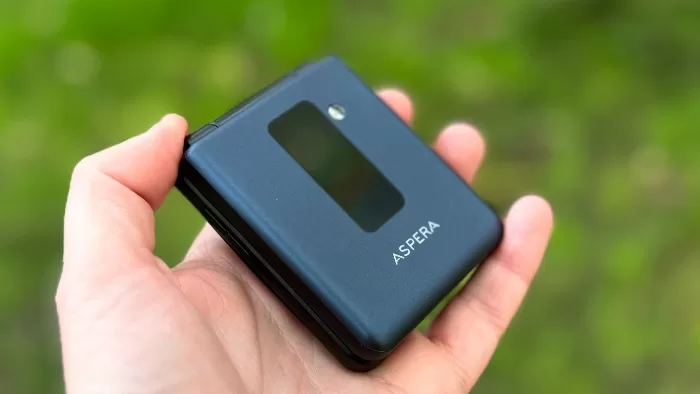
The Aspera F50 runs from a 1,000mAh removable battery, which, by modern standards is incredibly tiny. Just about every competing cheap Android phone you’ll find out there typically packs in five times as much battery power.
However, those phones are trying to do a lot more than the Aspera F50 is, and that’s where it does gain something of a battery edge. Obviously I couldn’t run my typical YouTube battery test adequately on the Aspera F50 – for a start, its Internet Browser really doesn’t like YouTube much, but on a screen that small it’s pretty pointless anyway – so I’ve had to experiment a little more with how to assess the Aspera F50’s battery life.
Based on a very low call setup – primarily because I really do need to work from something a little more powerful than the Aspera F50 on a day to day basis – it’ll easily get through a few days of usage without too much trouble.
Aspera doesn’t make any specific claims about battery endurance, and I do suspect the best part for many of its buyers will be the included charging base that does make putting it back on power a very simple task indeed. Drop it there and you can pretty much treat it like an old-school wireless landline handset, essentially.
Aspera F50: Alex’s Verdict

Is the Aspera F50 the phone of my dreams? No, but then I’m not the target market.
At $99, in the broader phone ecosystem, you absolutely can do more with your money than the Aspera F50 offers, but that does involve stepping into the smartphone world – and that’s not a step that everyone wants to take.
Your choices aren’t super broad for feature phones in Australia these days – it’s very slender pickings – but if that’s what you crave, then the Aspera F50 will get the job done.
Aspera F50: Pricing and availability
 |
Buy The Aspera F50! | Buy On Amazon |
The Aspera F50 retails in Australia for $99 outright.
Was this review useful to you? Support independent media by dropping a dollar or two in the tip jar below!





